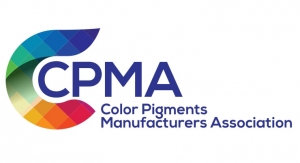The Lautenberg Chemical Safety Act, or amended Toxic Substances Control Act (TSCA), implemented a new regulatory approach for the evaluation of existing chemicals in commerce when it became law in 2016.
C.I. Pigment Violet 29 (PV29) was one of the first 10 chemicals selected by the Environmental Protection Agency (EPA) to undergo this new evaluation process. Since the beginning of the PV29 evaluation, the Color Pigments Manufacturers Association (CPMA) stepped forward as the industry’s technical and scientific resource, actively engaging with the Agency at every step of the four-year process.
The final PV29 risk evaluation, announced by EPA on Jan. 14, produced mixed results, according to an analysis conducted by CPMA.
While CPMA is satisfied with certain aspects of the final risk evaluation, several conclusions in the document are not consistent with widely acknowledged science or specialty/batch chemical manufacturing.
This particular evaluation was precedential because it utilized the first test orders issued by EPA under the expanded authority created by the Lautenberg amendments to TSCA.
CPMA compliments the Agency on the final evaluation’s statements that the solubility reports resulting from the test orders “were determined to be high quality,” and that “[t]hese studies confirm that C.I. Pigment Violet 29 is an insoluble particulate substance; that there is no expectation that C.I. Pigment Violet 29 will be taken up by fat solubility; and confirms that C.I. Pigment Violet 29 is not expected to bioaccumulate.”
CPMA believes the Agency got the science right on the matter of solubility.
This important finding should be carried forward in EPA’s risk evaluations of other color pigments, as color pigments are solids that are insoluble in, and essentially physically and chemically unaffected by, the vehicle or substrate in which they are incorporated.
Furthermore, CPMA believes the Agency should utilize this finding when conducting risk evaluations of other chemical substances that form stable particulates.
EPA also correctly determined there is no exposure to color pigment particles in workplaces that process plastic masterbatches containing PV29 into molded parts or fibers. This determination rested on EPA’s use of appropriate information pertaining to the plastic masterbatch sector of the color pigments industry value chain. Again, this conclusion should be applicable to all future risk evaluations of color pigments.
CPMA is also pleased that EPA retained its originally proposed findings of no unreasonable risk to the environment, consumers, or the general public, or from distribution of PV29.
CPMA disagrees, however, with EPA’s finding of risk to humans in manufacturing or processing PV29 based on subclinical effects found in rodents exposed to carbon black, an inappropriate analog to PV29. CPMA technical comments to the Agency dispelled any scientific relevance to humans of such effects.
CPMA also emphasized that it is unreasonable for EPA to surmise that these effects could be precursors to undisputedly adverse health effects like fibrosis, asthma and chronic obstructive pulmonary disease – especially since the sole U.S. manufacturer of PV29 has not observed any instances of workers experiencing non-malignant respiratory disease caused by exposures to workplace dust in its 40 years of operation.
EPA’s conclusions are based on scientific speculations, not reality.
CPMA is also quite disappointed that EPA disregarded fundamental facts about the behavior of color pigment particles in assuming that workplace dust at sites manufacturing or processing color pigments could be made up of primary particles, rather than agglomerated pigment particles.
Finally, CPMA’s analysis concludes the workplace air exposure monitoring study conducted pursuant to a Section 4 test order was performed correctly and in agreement with the terms of the approved study plan.
The Agency’s decision to disregard, or discount, valid air monitoring data using the approved methodology will give others pause the next time EPA seeks to issue Section 4 test orders in risk evaluations involving specialty/batch chemical manufacturing.
While the final risk evaluation reaches mixed conclusions, CPMA will continue to engage with EPA to ensure the risk management rule that follows is relevant and reasonable in addressing areas described as presenting unreasonable risk.
For more information, contact David Wawer, CPMA Executive Director, at (571) 348-5106, or davidwawer@cpma.com.















